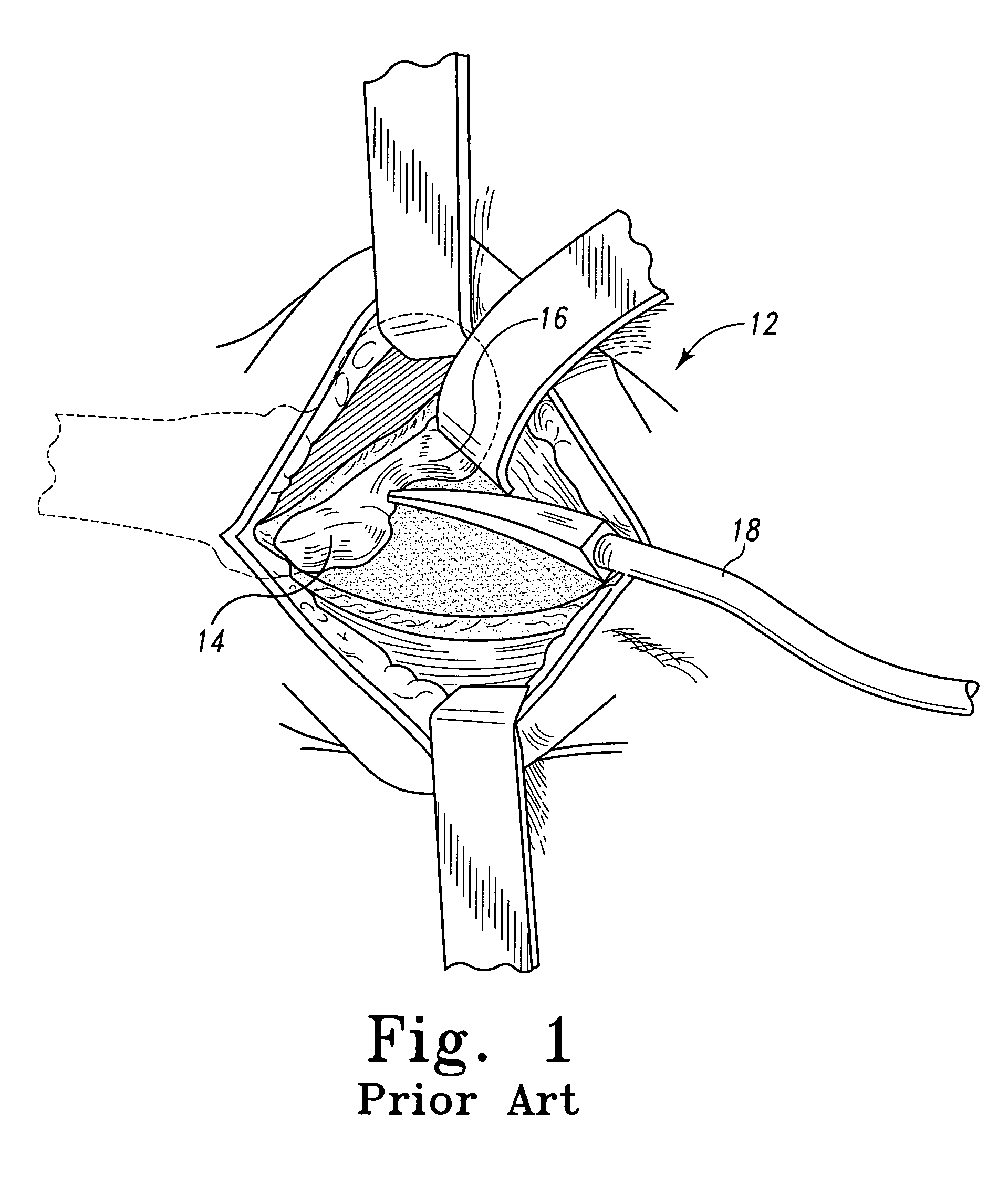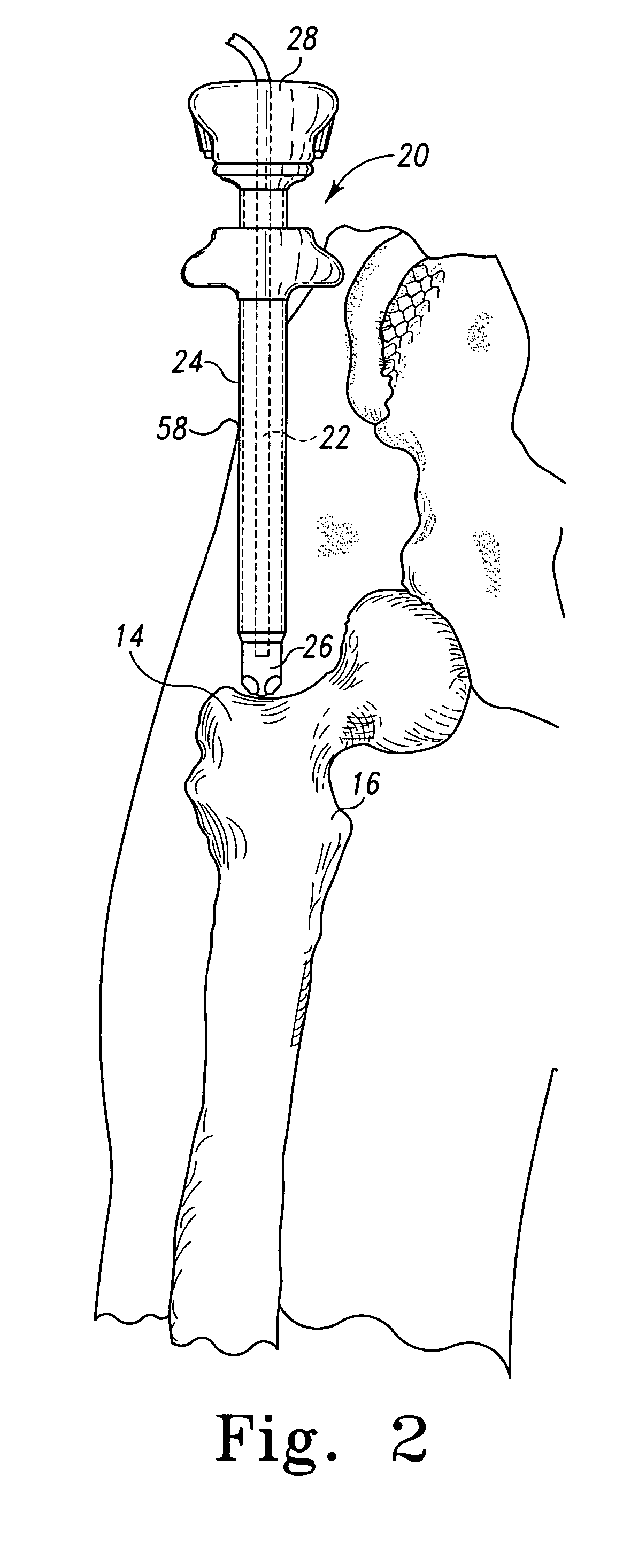Minimally invasive orthopaedic apparatus and methods
a minimally invasive, orthopaedic technology, applied in the direction of prosthesis, surgical forceps, osteosynthesis devices, etc., can solve the problems of long-since viewed as prohibitive the size of such plates, the difficulty of achieving the effect and the inability to significantly improve the accuracy of minimally invasive techniques
- Summary
- Abstract
- Description
- Claims
- Application Information
AI Technical Summary
Benefits of technology
Problems solved by technology
Method used
Image
Examples
Embodiment Construction
[0063] While the concepts of the present disclosure are susceptible to various modifications and alternative forms, specific embodiments thereof have been shown by way of example in the drawings and will herein be described in detail. It should be understood, however, that there is no intent to limit the concepts of the present disclosure to the particular forms disclosed, but on the contrary, the intention is to cover all modifications, equivalents, and alternatives falling within the spirit and scope of the disclosure.
[0064] Referring now to FIGS. 1-53, there is shown a number of apparatus and methods which may be utilized to perform a minimally invasive orthopaedic surgical procedure. Common to many of the concepts disclosed herein is the notion of utilizing endoscopic instruments to provide the surgeon with enhanced viewing capabilities in the form of direct visualization of the surgical site. The concepts of the present disclosure may be utilized in a wide variety of orthopaed...
PUM
 Login to View More
Login to View More Abstract
Description
Claims
Application Information
 Login to View More
Login to View More - R&D
- Intellectual Property
- Life Sciences
- Materials
- Tech Scout
- Unparalleled Data Quality
- Higher Quality Content
- 60% Fewer Hallucinations
Browse by: Latest US Patents, China's latest patents, Technical Efficacy Thesaurus, Application Domain, Technology Topic, Popular Technical Reports.
© 2025 PatSnap. All rights reserved.Legal|Privacy policy|Modern Slavery Act Transparency Statement|Sitemap|About US| Contact US: help@patsnap.com



